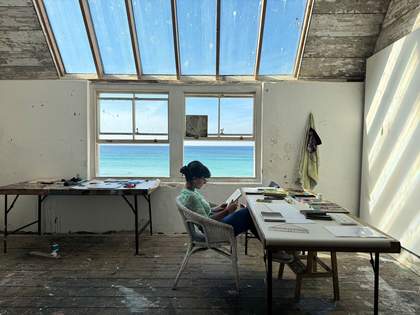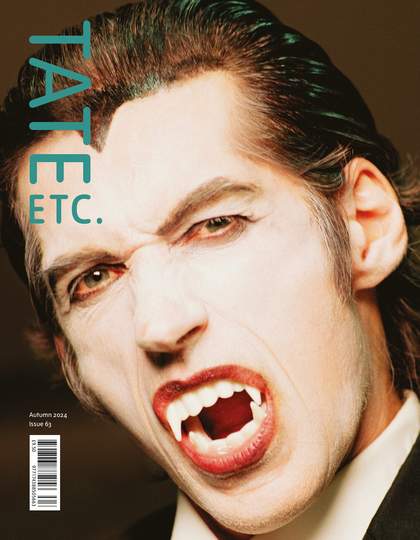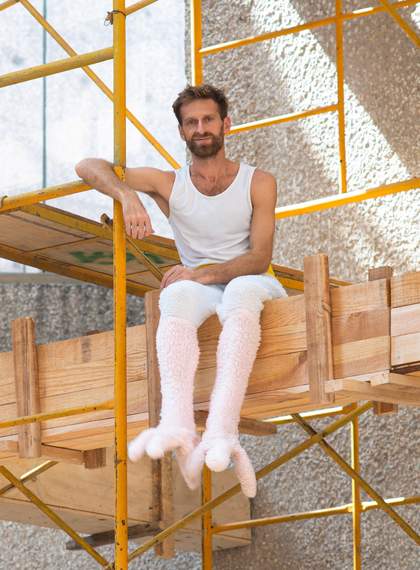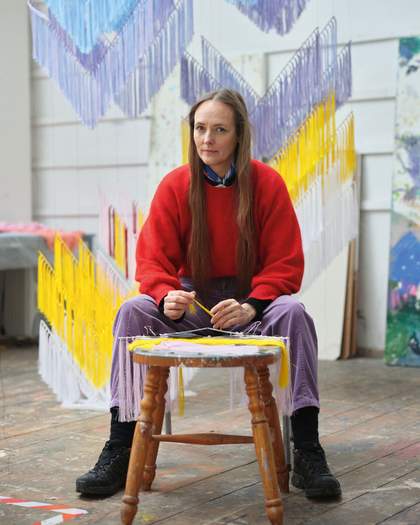
Cansu Çakar in Porthmeor Studio, St Ives, May 2024
Photo: Merve İşeri
FIGGY GUYVER Your work often investigates local histories. Where did your research lead you during your residency at Porthmeor Studios in St Ives?
CANSU ÇAKAR My background is partly in historiography – the study of written history and its visual forms. I find that mythological stories can sometimes guide me towards solving current issues. This way of thinking drew me to discover some compelling Cornish legends.
As a Mediterranean artist (I live on the west coast of Turkey), I got hooked on stories of maritime trade between Mediterranean and Cornish cultures while on the residency. This led me to learn about Tyrian purple, a Phoenician pigment made from the mucus of murex sea snails. But rather than retell these histories, I want to create a narrative fiction of my own. Cornish legends, ancient Greek mythology – it’s all speculation.
FG What form will the new work take?
CÇ Since arriving in St Ives, I haven’t been able to stop thinking about seashells. My work is still in production, but I hope to make a sculptural painting that curves in on itself – a bit like a shell. However, it’s rare for me to carry out a project in the way that I first envision it. Indirect routes can be pleasurable and transformative.
FG Your training in traditional Turkish arts included illumination and miniature painting. What drew you to these forms?
CÇ In traditional Turkish miniature painting, artists were required to depict events according to the official palace narrative, which made it an art form based on power. However, in studying these traditional arts, I noticed humour, witty compositions and hidden messages in the paintings – the details that artists added when they were bored (it must have been dull to depict the sultan again and again). Despite being images of power, I discovered that the aesthetic language of miniature painting is full of everyday references. I love hiding jokes in my own work, too.
FG Your work often tells contemporary stories through these traditional methods. Why blend old and new?
CÇ Blending old and new is really about substitution. You can update one idea while retaining previous elements. The recreated past feels familiar, comfortable and secure, which allows us to explore sensitive topics more effectively. An art form that was once shackled by rules, and made for the rich and powerful, can then have a completely different conceptual application.
I compare my work to a Venus fly trap. From a distance, you see some traditional motifs, but when you get closer, you might notice sarcasm, or criticism of a conservative idea, for instance. I choose traditional techniques as a form of resistance.
FG What impression would you like your work to make on visitors?
CÇ I hope that the time they spend looking at the work will feel as meaningful as the time I spent creating it.
Cansu Çakar, Tate St Ives from 19 October. Supported by SAHA – Supporting Contemporary Art from Turkey.
Cansu Çakar is an artist who lives in İzmir, Turkey. She talked to Figgy Guyver, Assistant Editor, Tate Etc.




